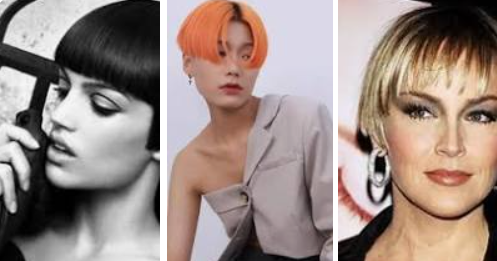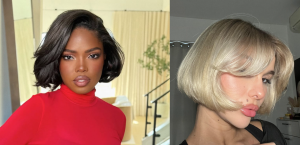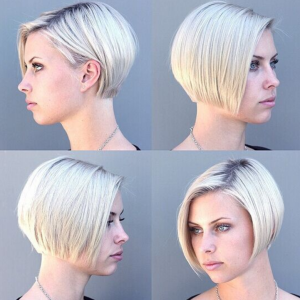Ultra Short Bobs & Jaw-Length Cuts: Short Shapes That Make a Big Statement in 2025

Short haircuts are having a moment in 2025—and not just any short haircut. The jaw-length bob and ultra-short bob variations are rising in popularity for their bold impact, versatility, and ability to reflect personal style while staying clean and polished. According to recent industry coverage, these shapes are among the most requested for 2025.
Here’s how stylists can make these cuts work for clients, how to tailor them by texture and face shape, and how to position them in your service offerings.


1. Why Jaw-Length & Ultra Short Cuts Are Trending
A statement with minimal length: A cut that stops at the jaw or chin immediately draws attention to facial structure, neckline, and bone shape—making it a bold but wearable shift.
Efficient styling: Shorter lengths can translate into faster service, easier styling routines, and lower maintenance for the client. Glamour notes that “a bob … is a classic for a reason” in 2025.
Modern updates to classics: While long bobs and lobs still dominate, the sharper, more defined ultra-short options reflect a move toward precision and chic simplicity rather than layered long hair.
2. Key Design Considerations for Stylists
When cutting a short shape of this nature, technical precision is non-negotiable. Here are the factors to address:
Length endpoint: The jawline isn’t just arbitrary—it frames the face and can enhance features. A cut that hugs the jaw will emphasize cheekbones and create a more structured silhouette.
Perimeter control: Short bobs sit without much “length buffer,” so the perimeter must be intentional. Whether it’s blunt, beveled, or slightly graduated will affect how it grows out and frames the face.
Internal structure: Even in short shapes, internal weight must be managed—especially in thicker hair. Micro-undercuts or precise internal layering are tools to reduce bulk while maintaining strong external line.
Texture awareness: For waves or curls, allowance for expansion is critical. A short bob may look dramatically different once dry—understanding texture behavior is key.
Face-shape mapping:
For round faces: Slightly longer in front or soft layering can elongate.
For square faces: A jaw-length bob with soft edges or bevel can soften angles.
For oval: Most lengths work, so your design can lean into accenting features.
Finish strategy: The cut must look intentional both styled and natural. Decide if the finish will be sleek (flat iron + gloss) or airy (diffused waves + light styling). The cut must support the finish you intend.
3. Service & Consultation Strategy
**Position it as an investment—**not a shortcut. Many clients fear “short” means “less work”—clarify that while styling may simplify, the cut requires precision and maintenance awareness.
Talk grow-out early. A jaw-length bob will show changes quickly. Frame it: “We’ll design the length now with your lifestyle in mind. When it grows, we’ll maintain the shape by…”
Texture test in the chair. Especially on curly/wavy hair: show the client how the shape will sit dry versus wet. Nail expectations before proceeding.
Maintenance schedule. Short shapes often need more frequent trims (6-8 weeks) to keep the line sharp. Factor this into your pricing and client commitment.
4. Who This Works For—and Who It Doesn’t
Ideal Clients:
Those wanting a bold change and comfortable with higher styling visibility.
Clients with defined features (jawline, cheekbones) who will benefit from a shorter silhouette.
Clients ready for commitment to styling or comfortable with simpler routine.
Not Ideal:
Clients who prefer very low-maintenance daily styling and dislike daily shaping.
Those with extreme shrinkage curls where the shape would pull up too much.
Clients transitioning out of very long lengths who might benefit from a lob first.

